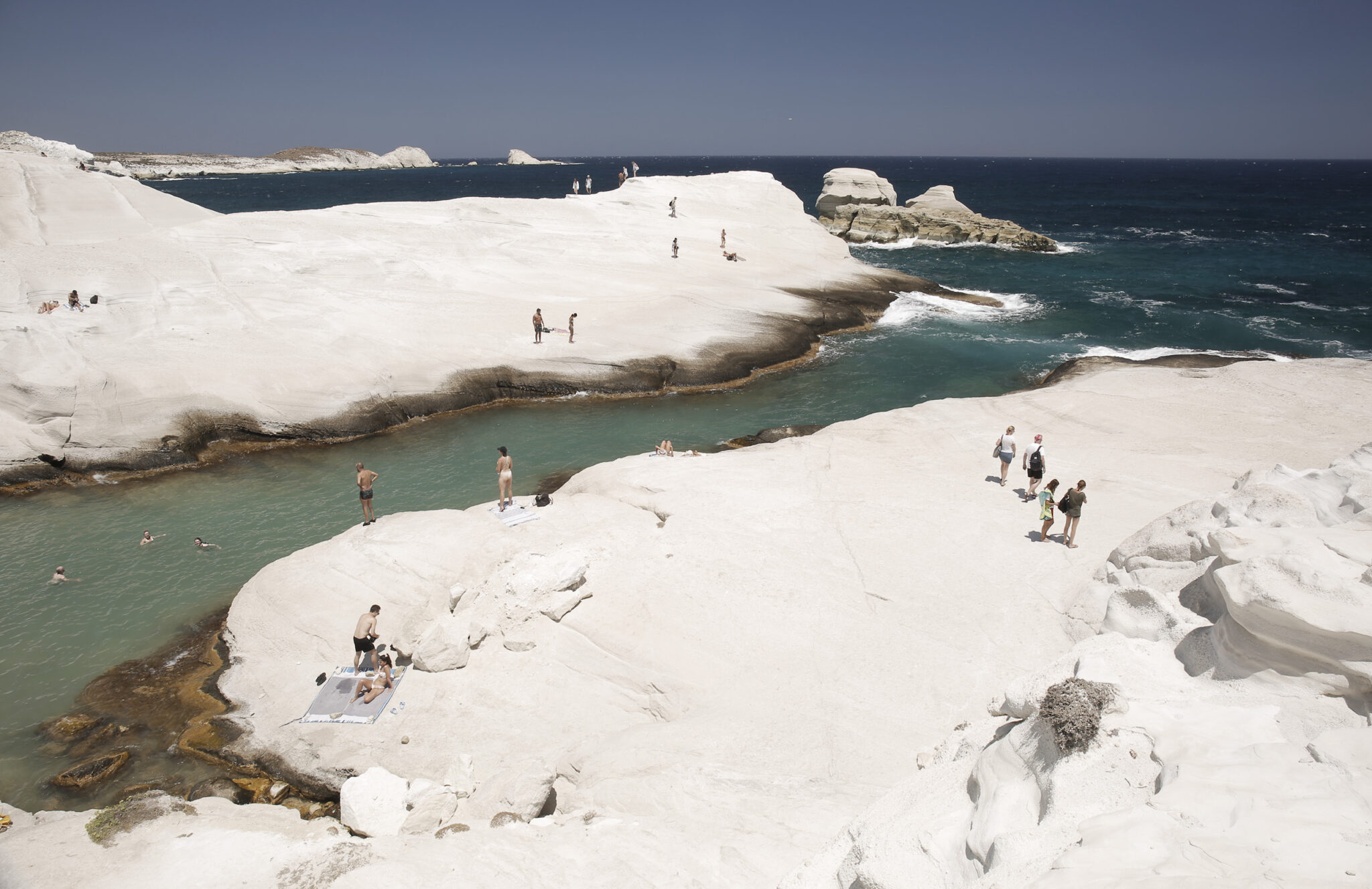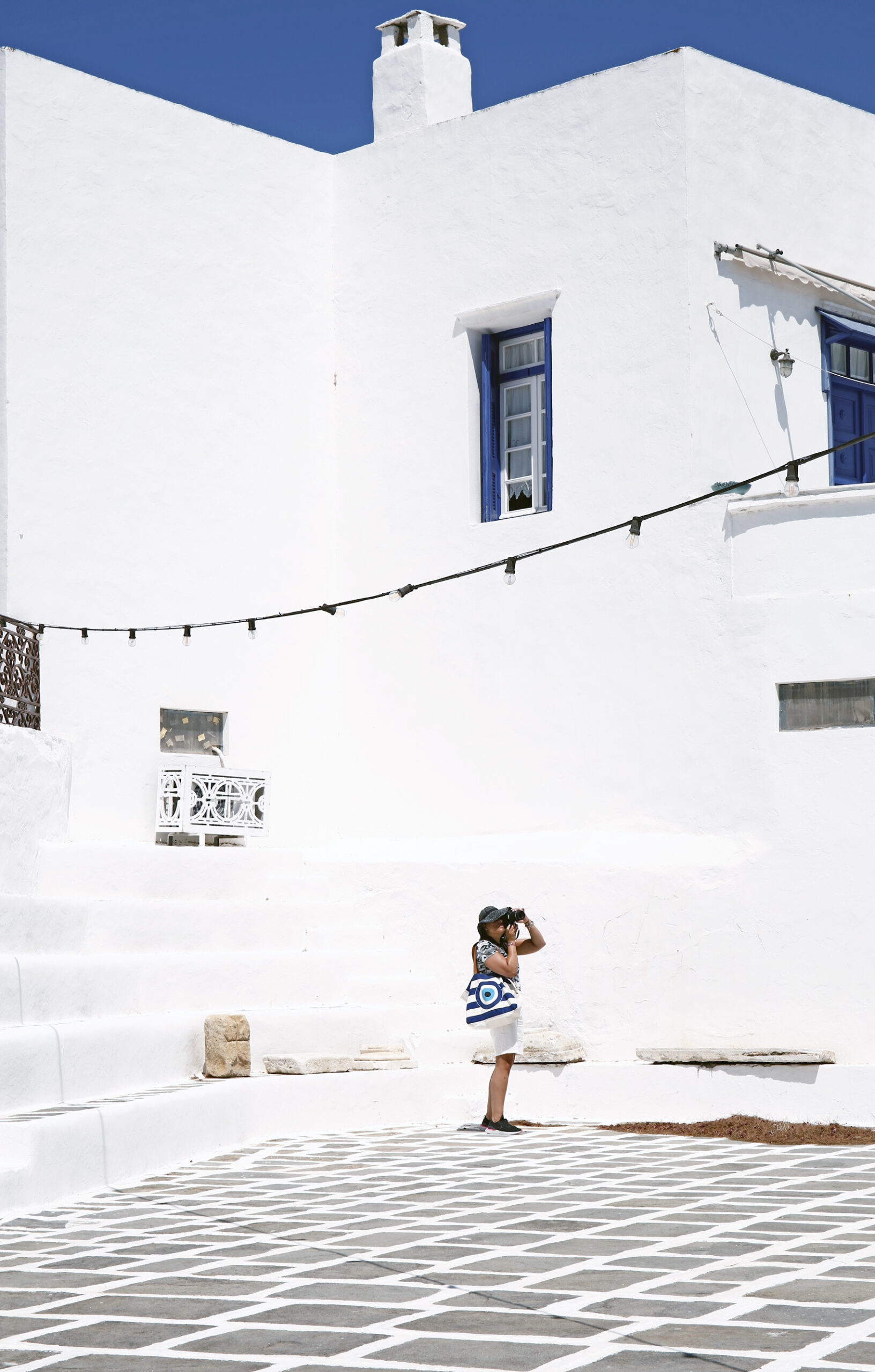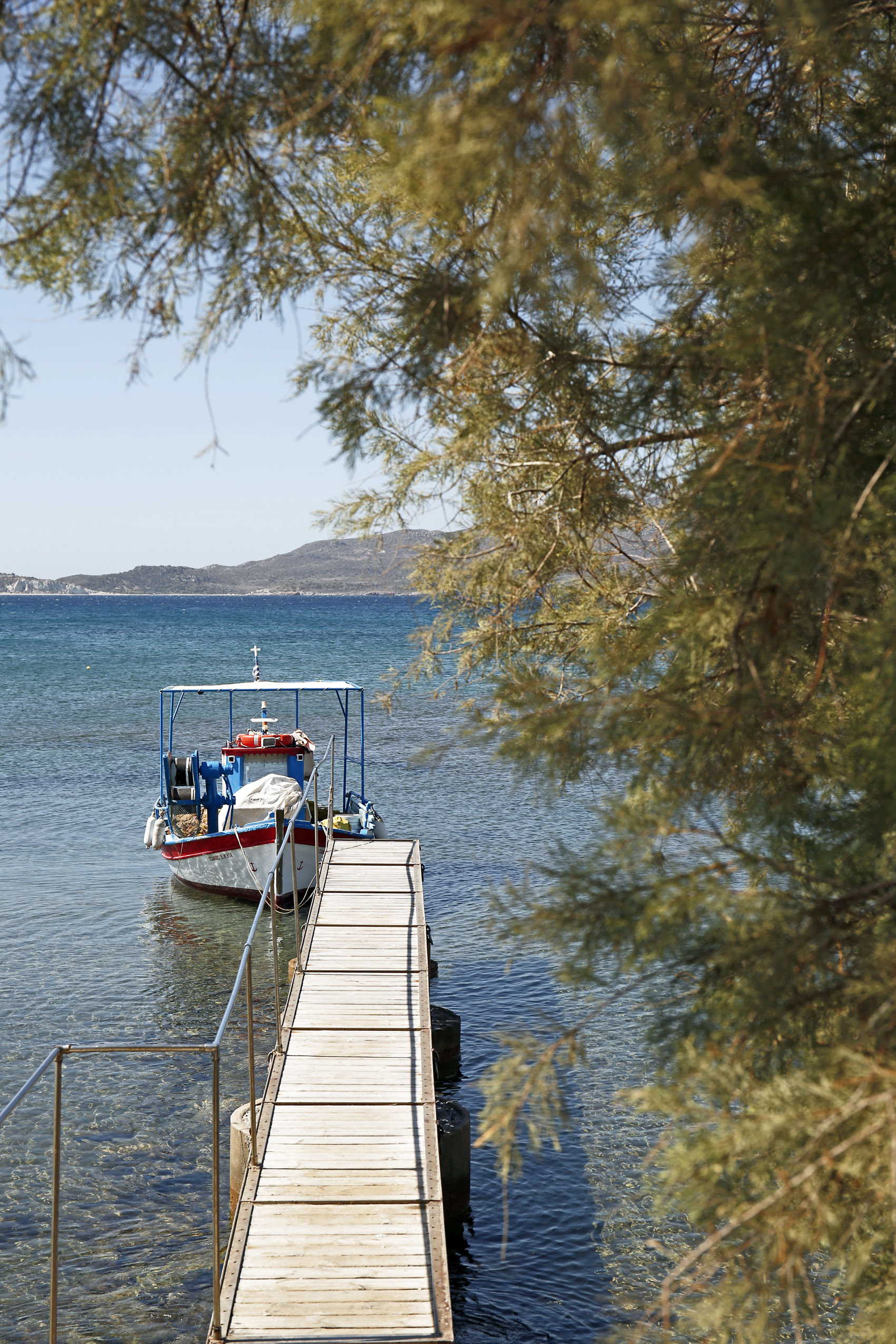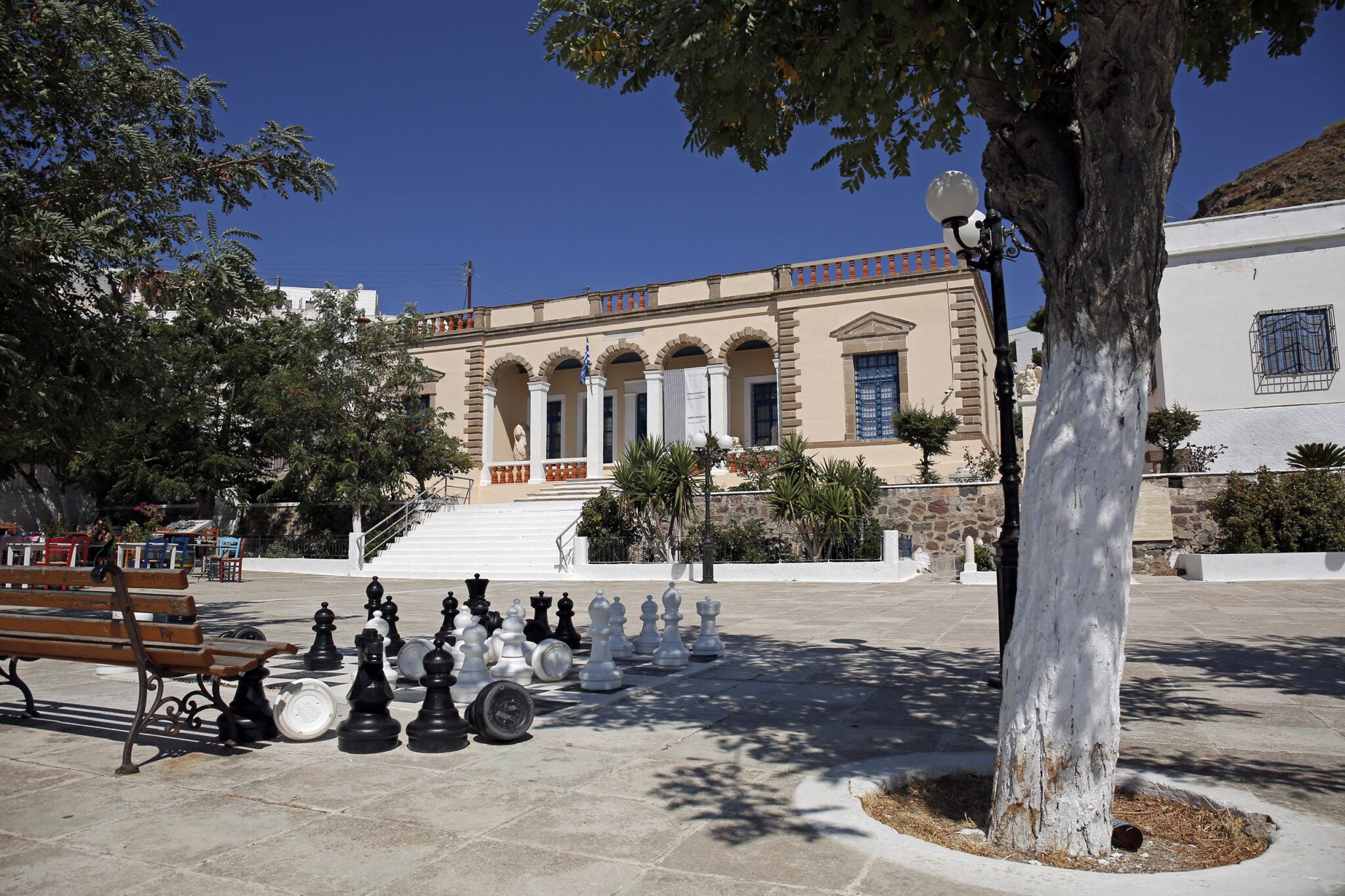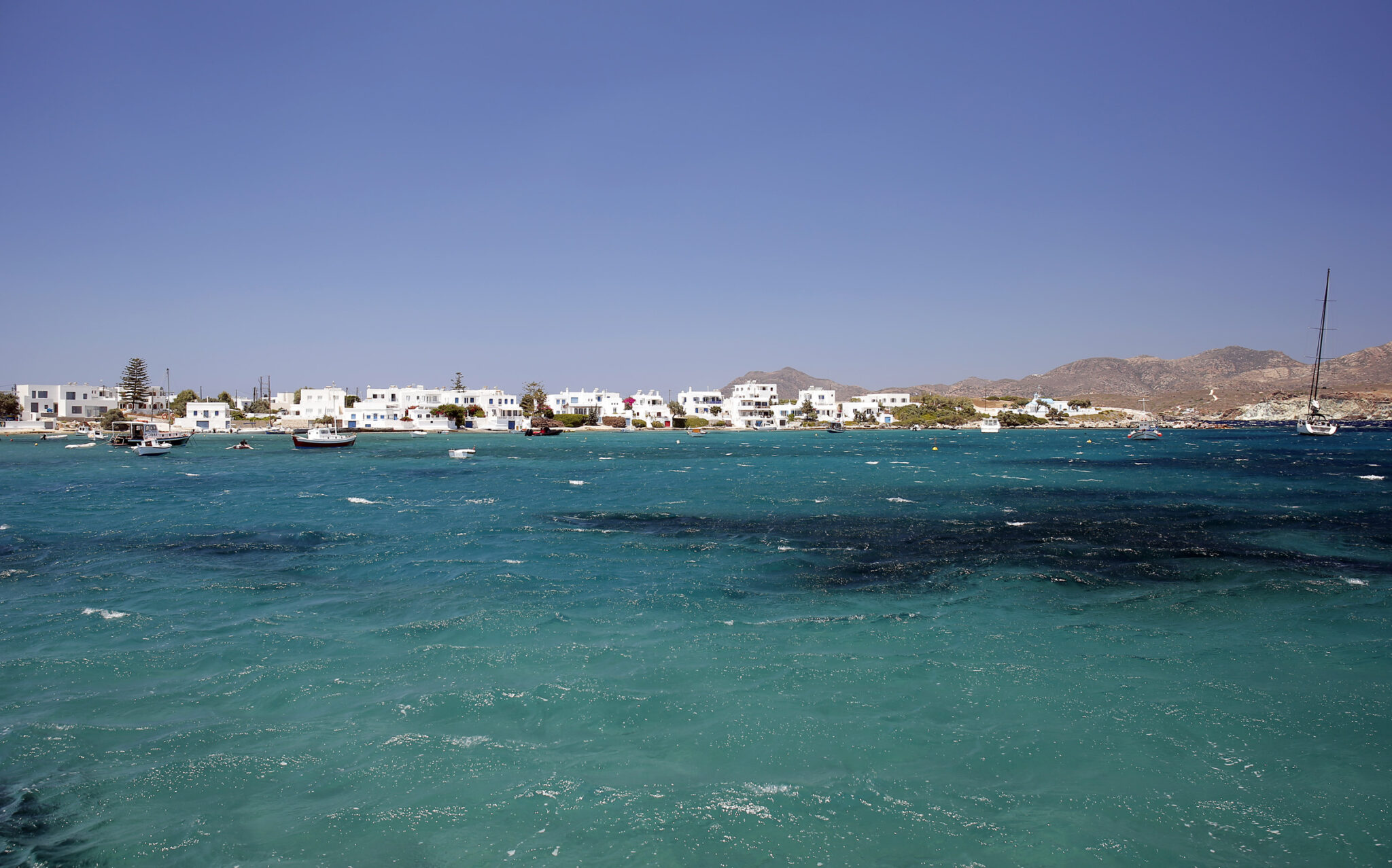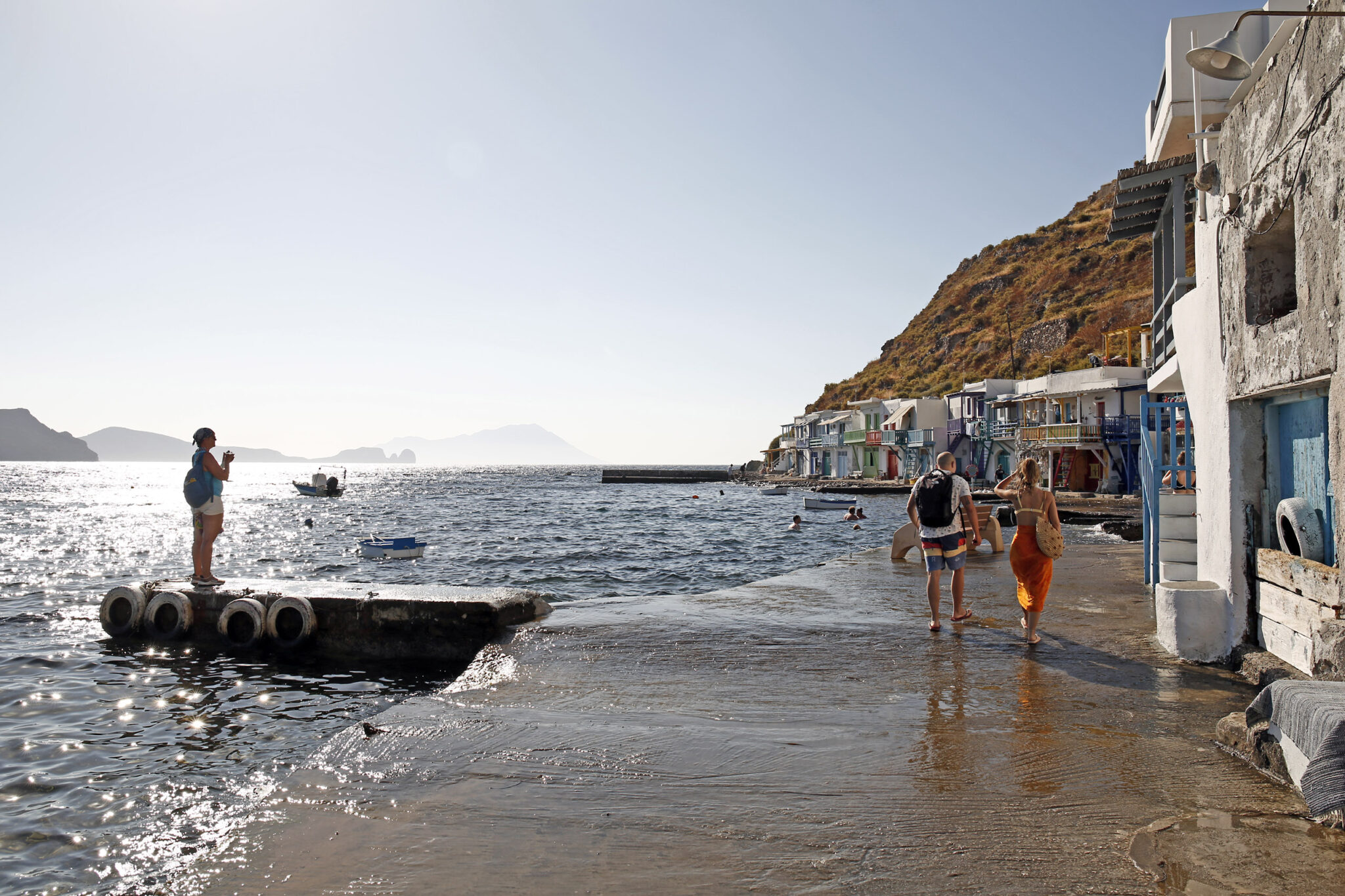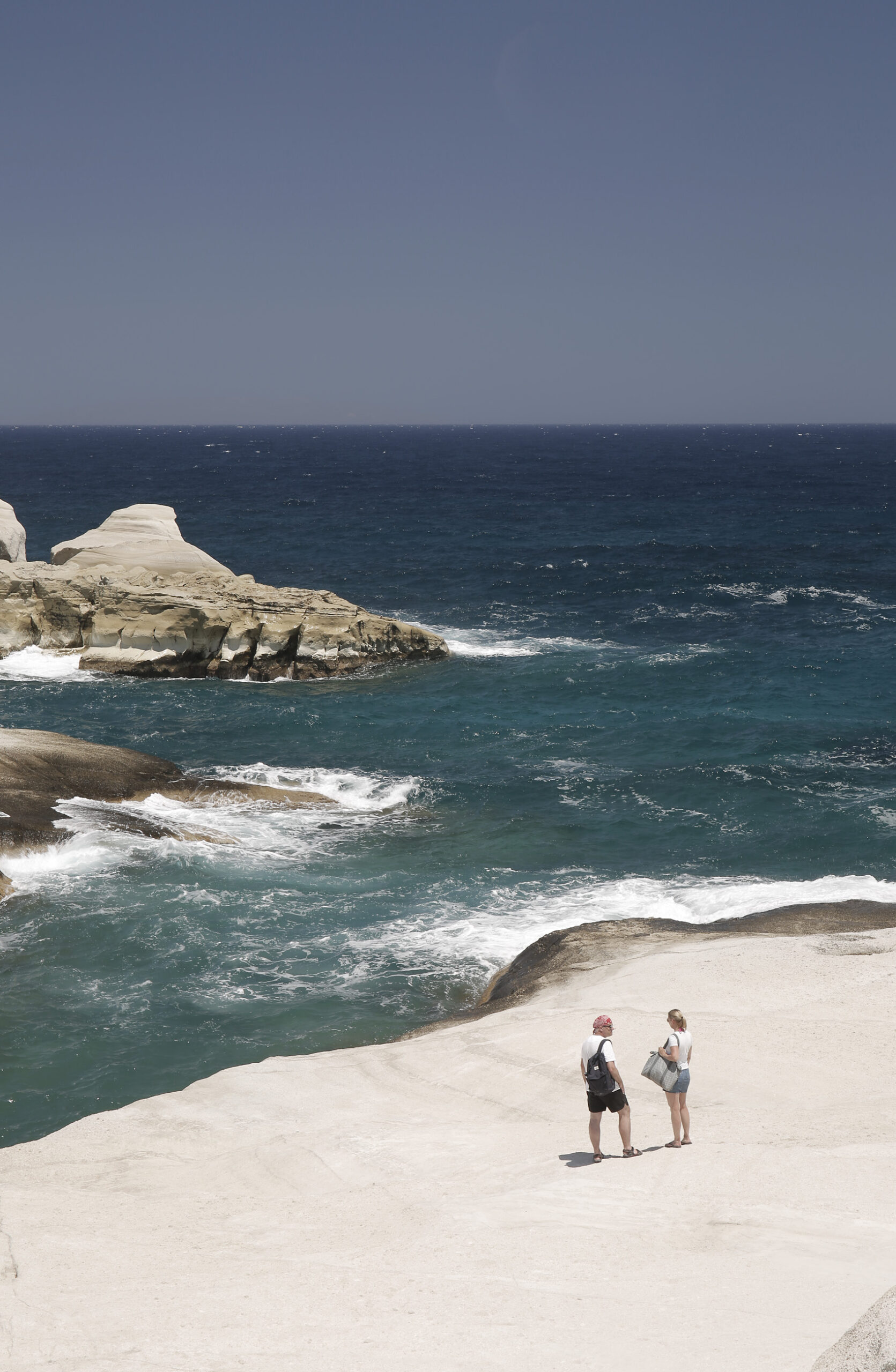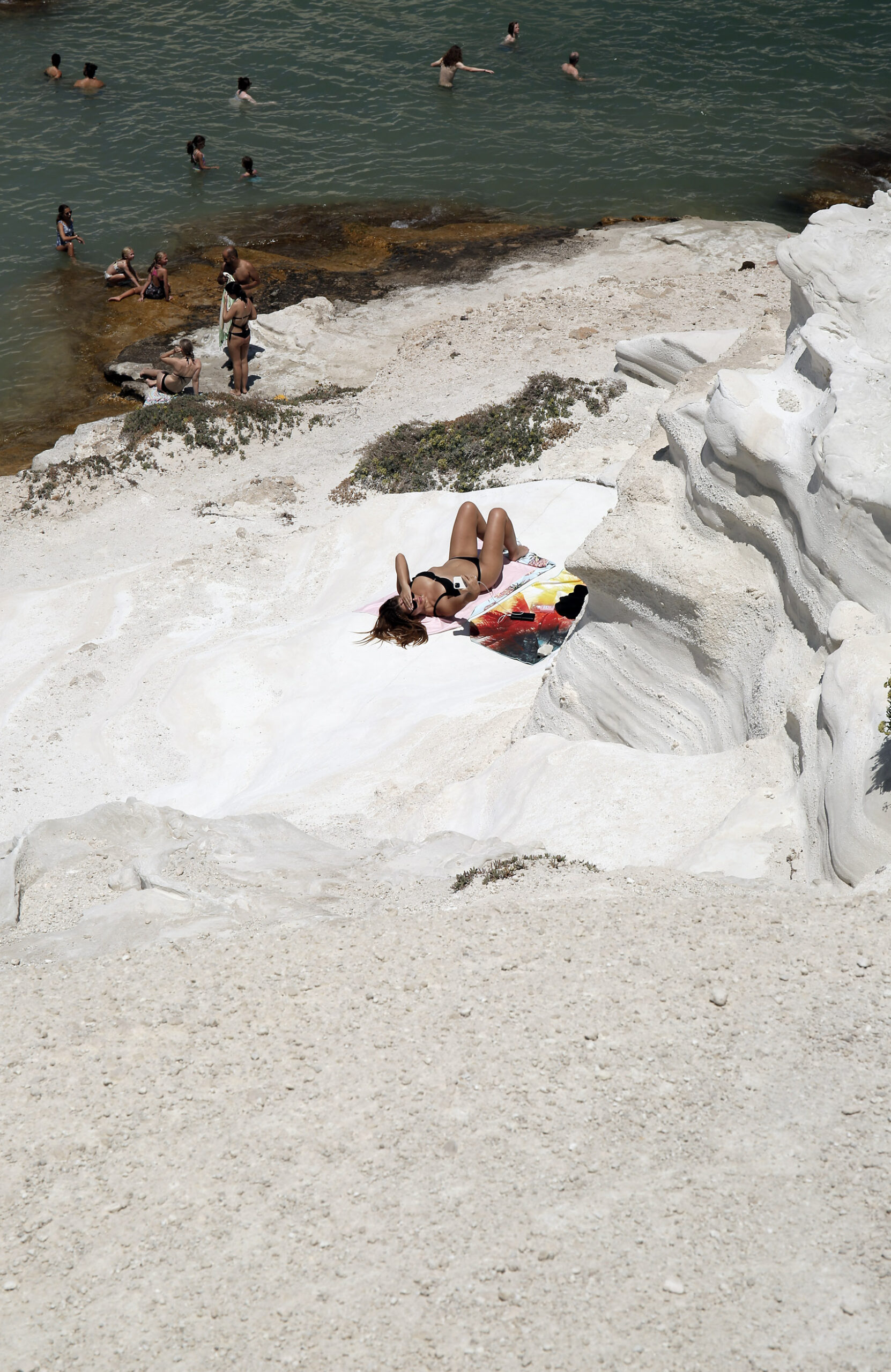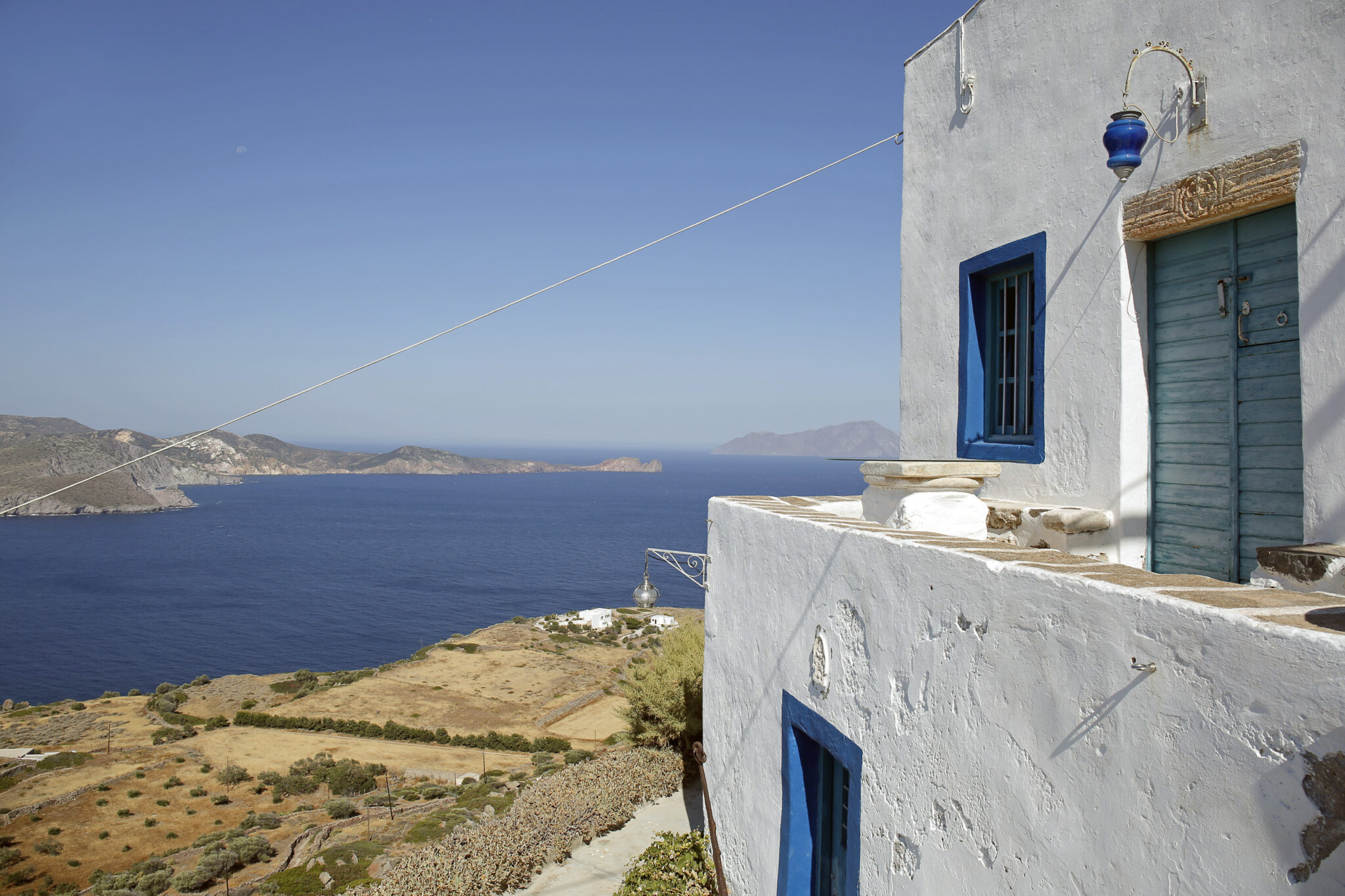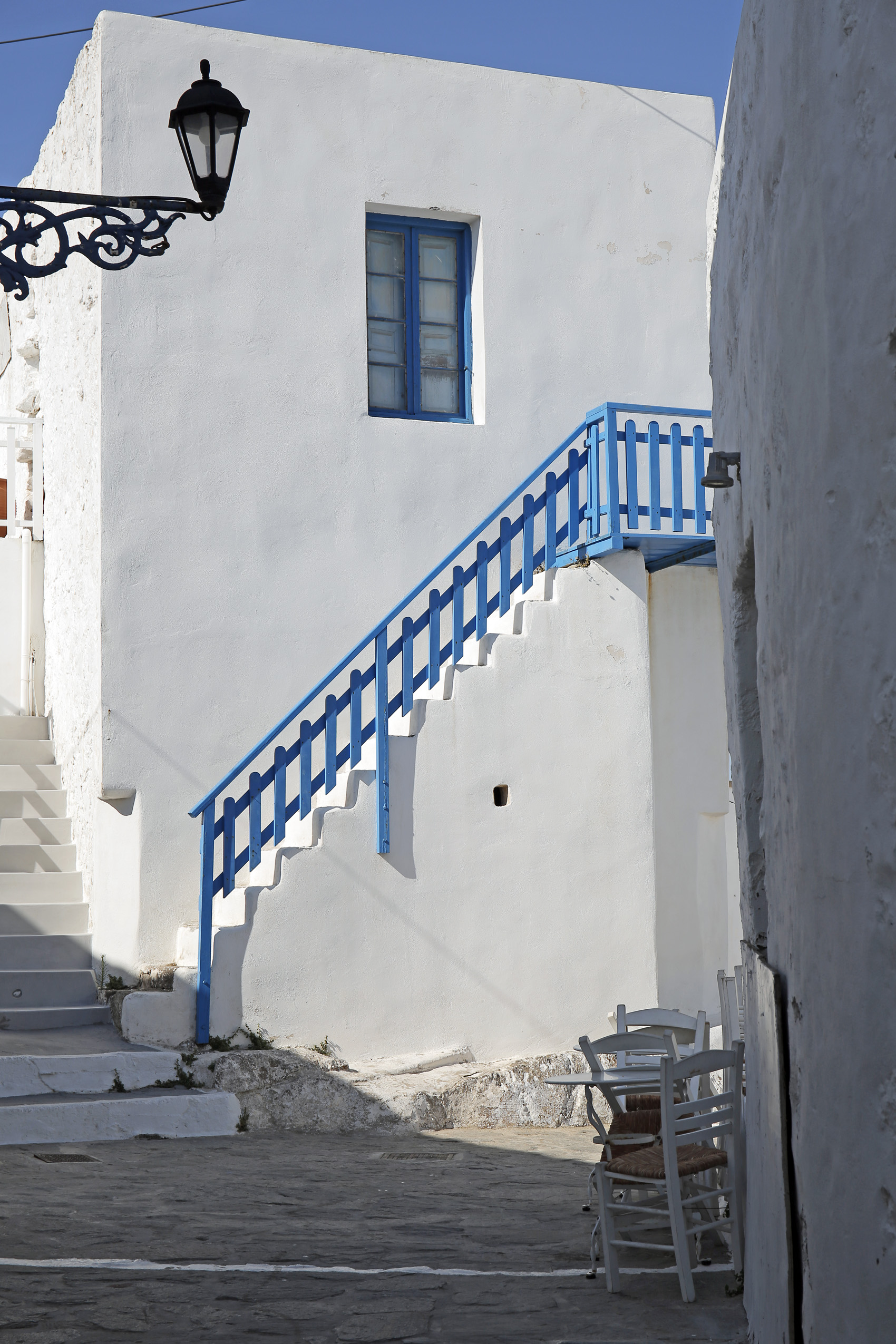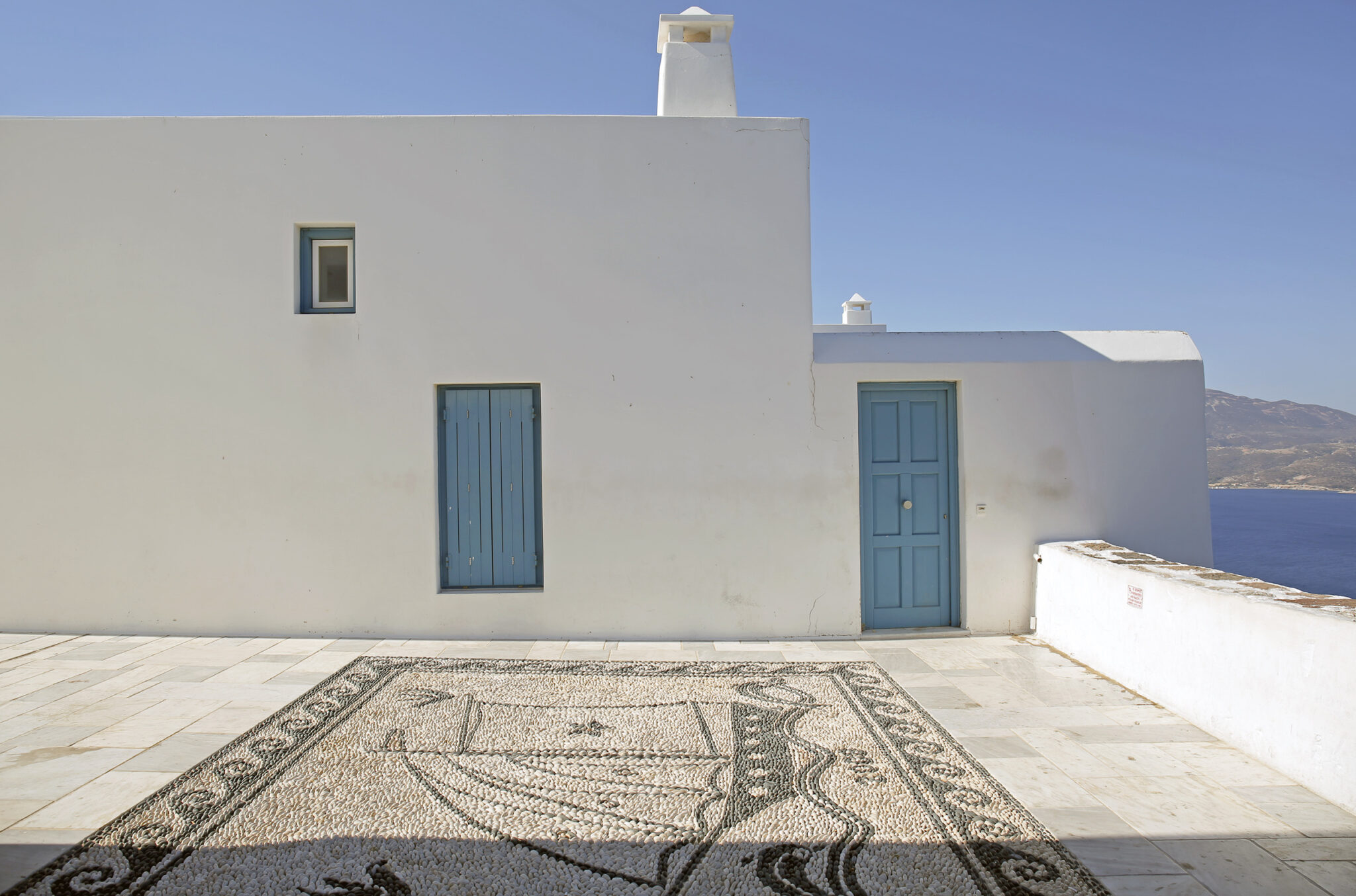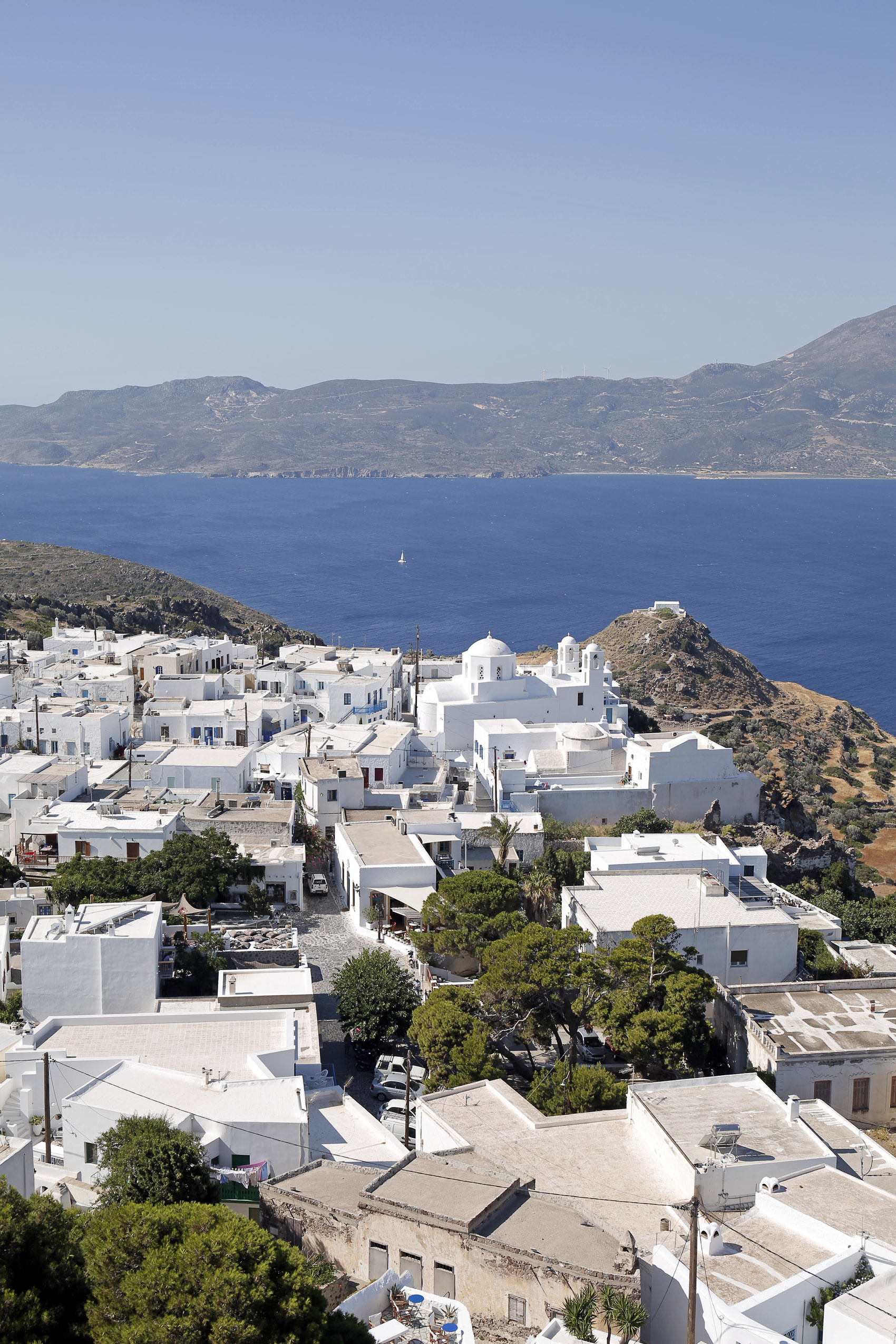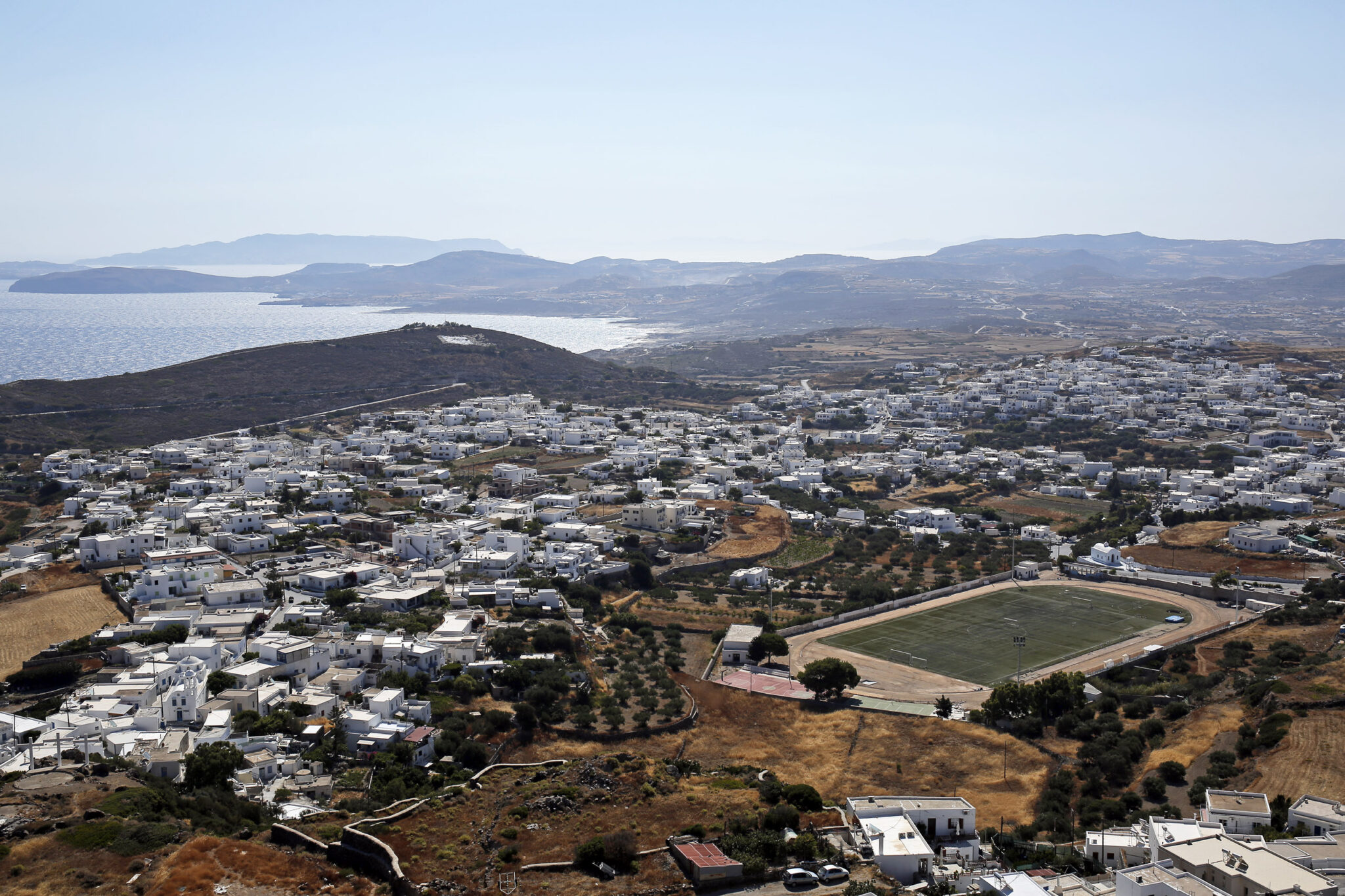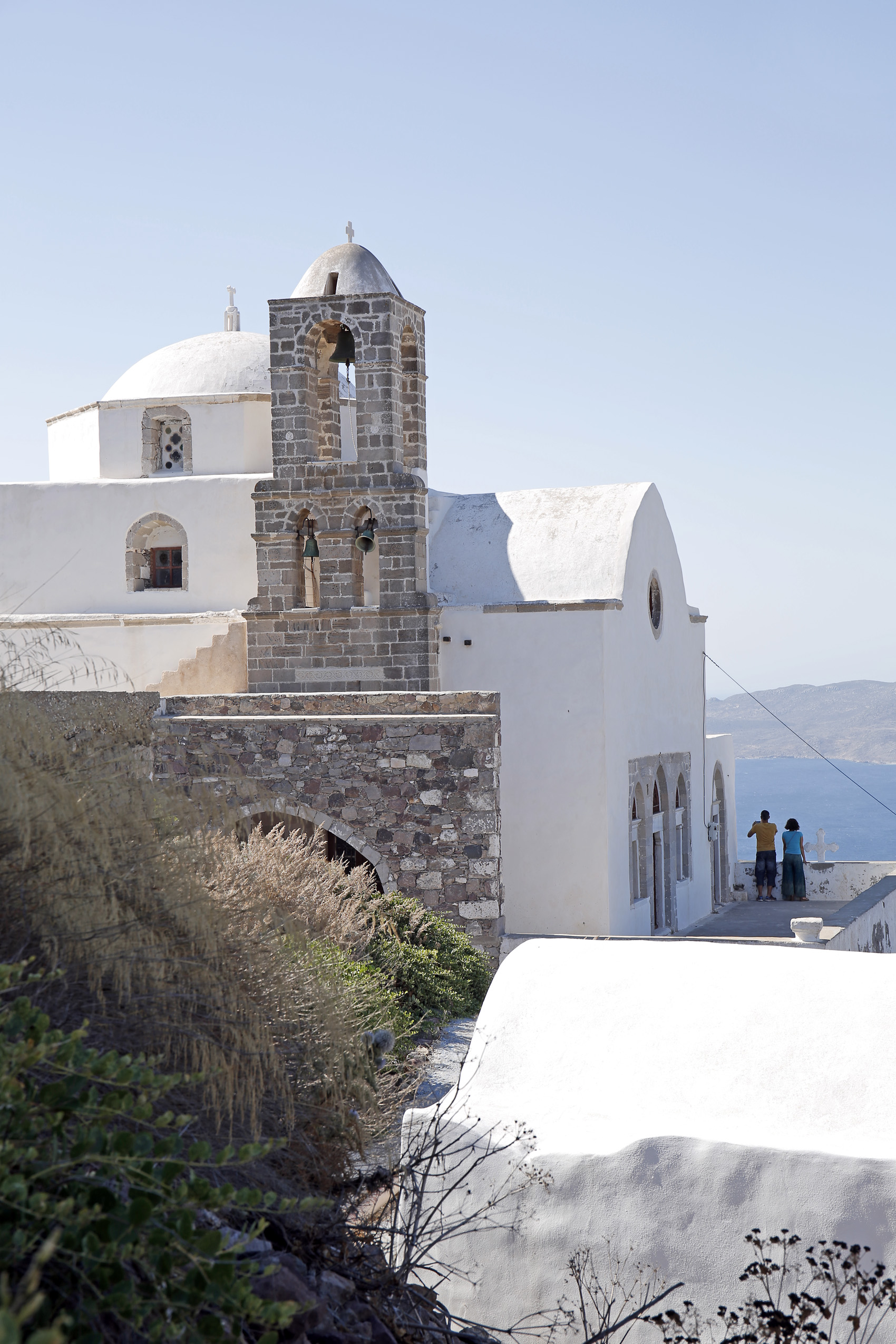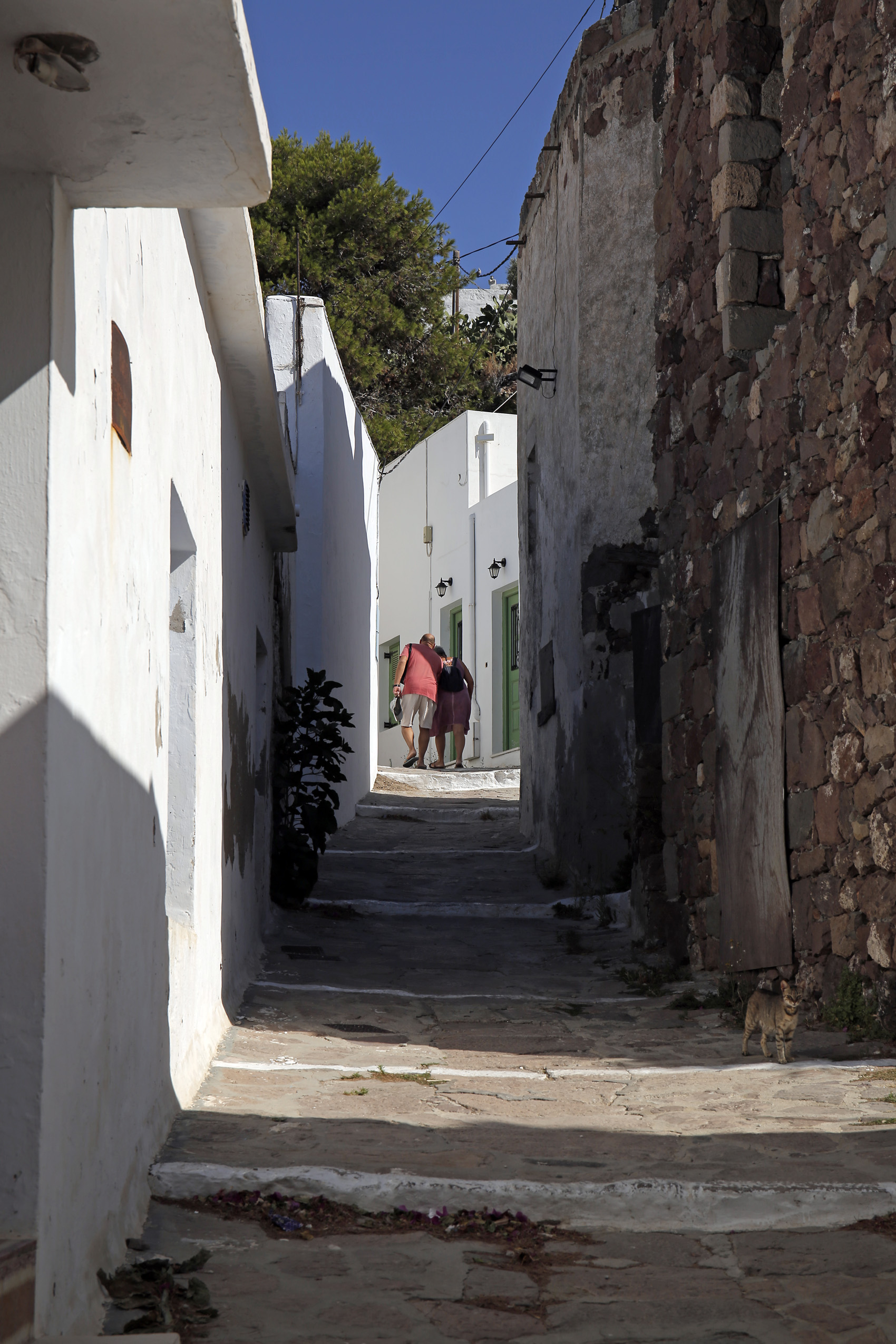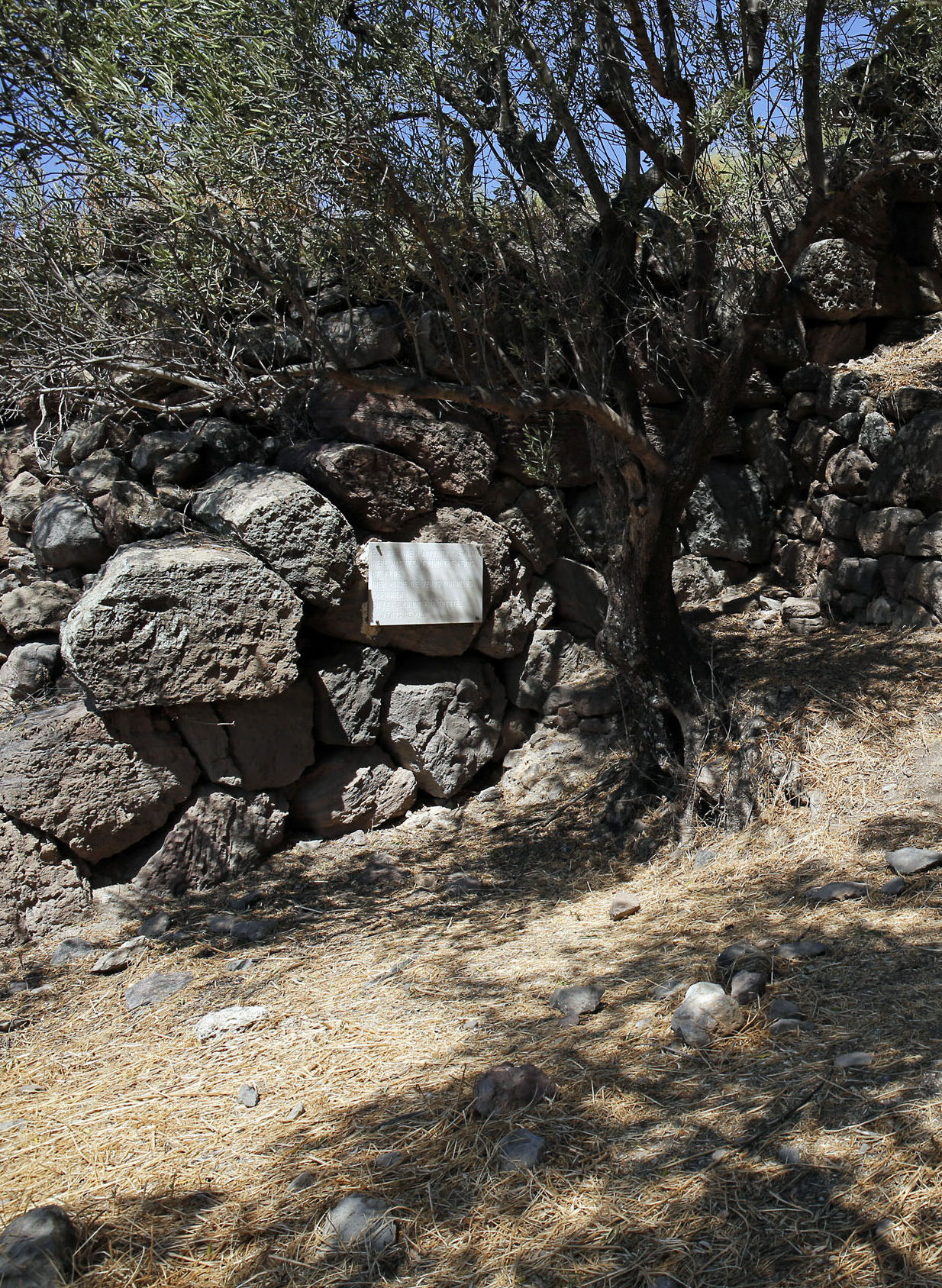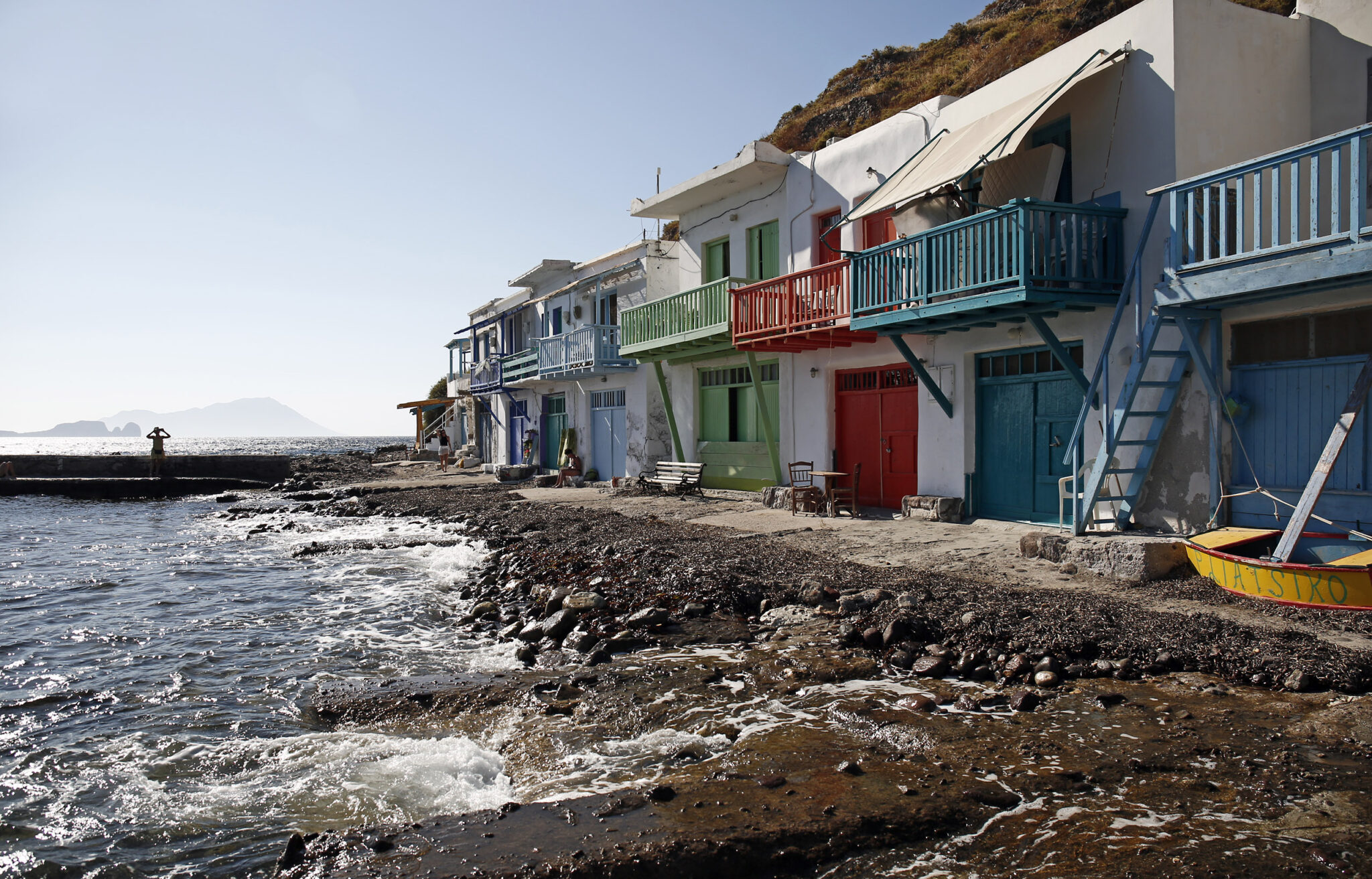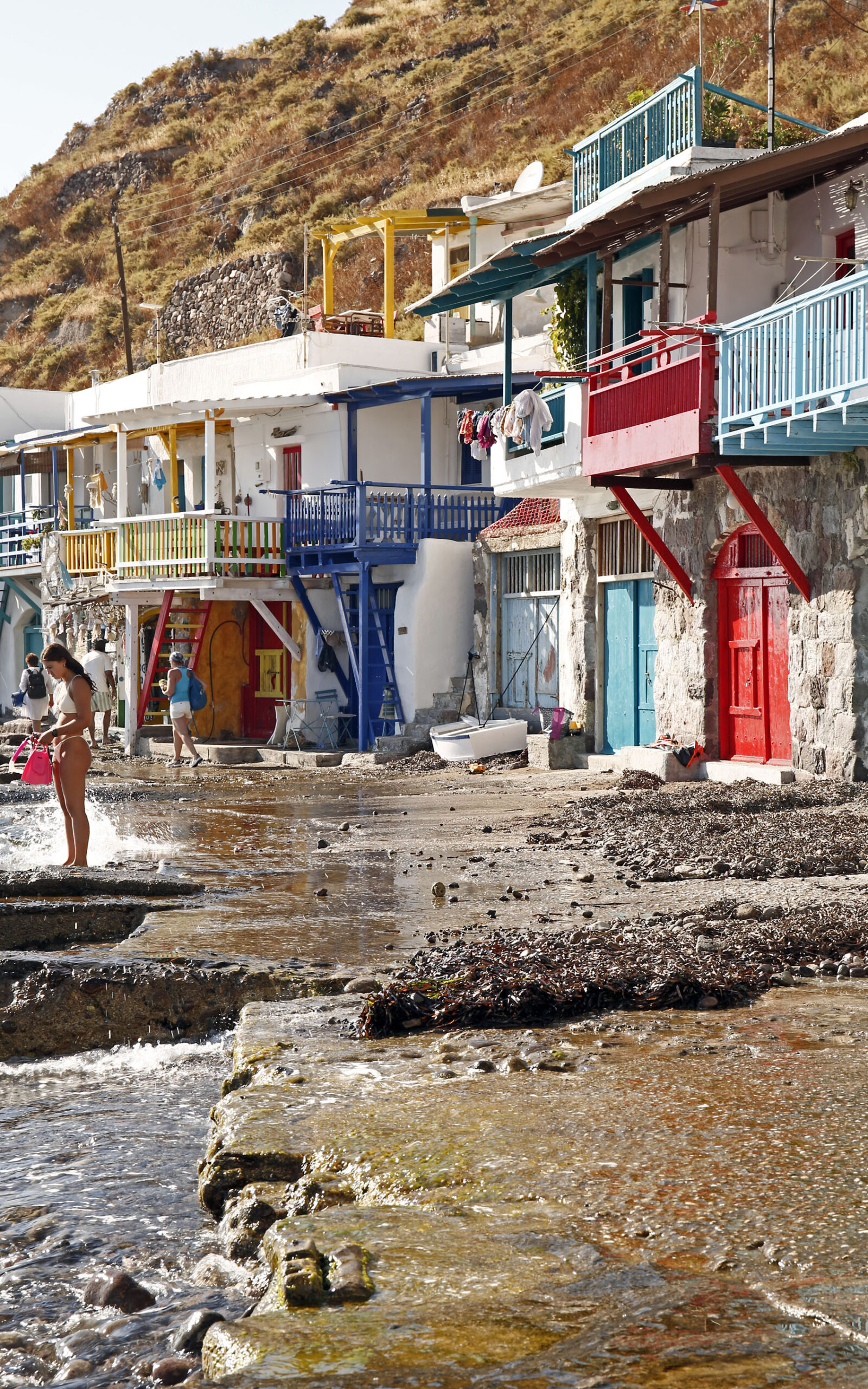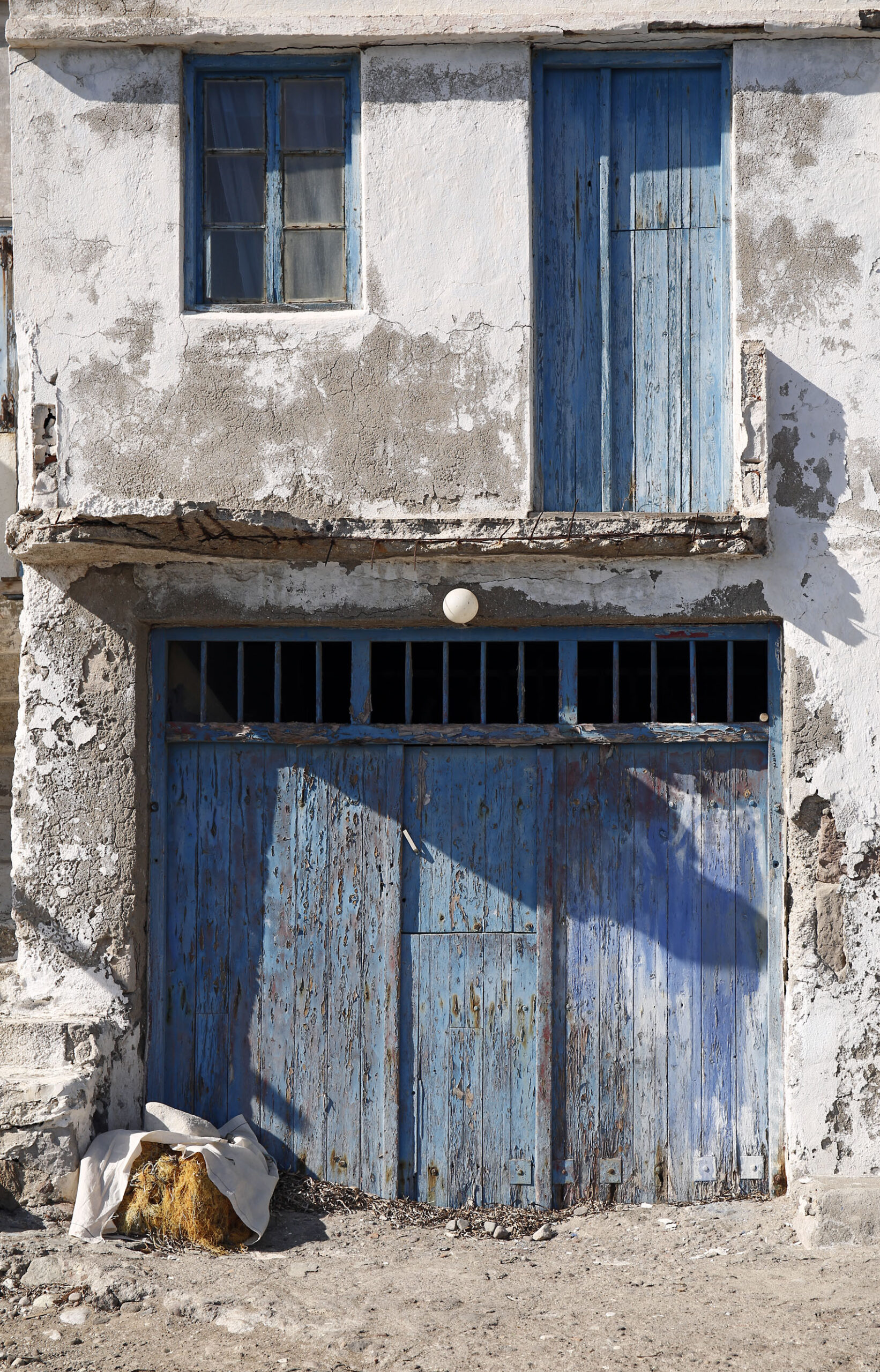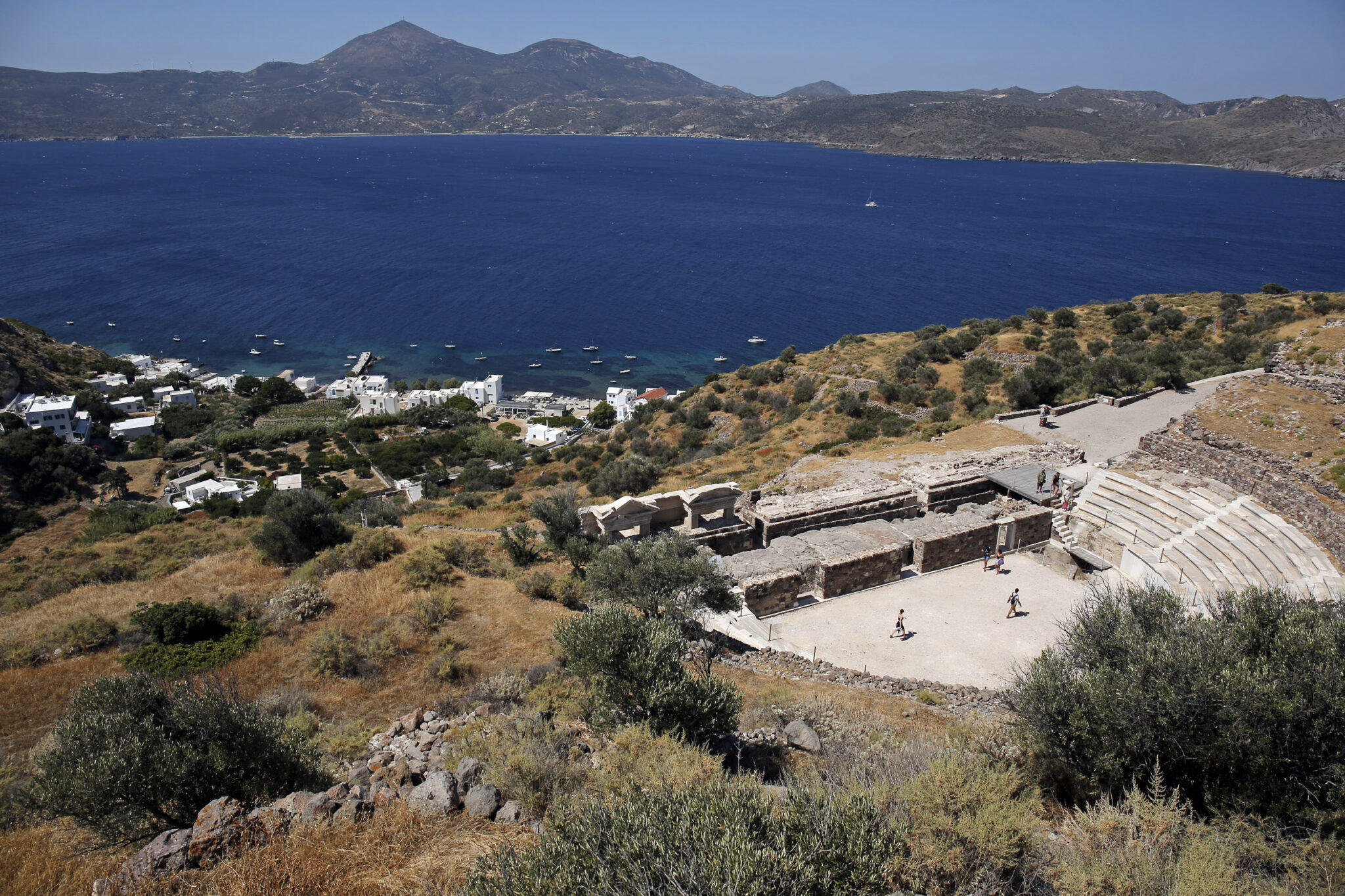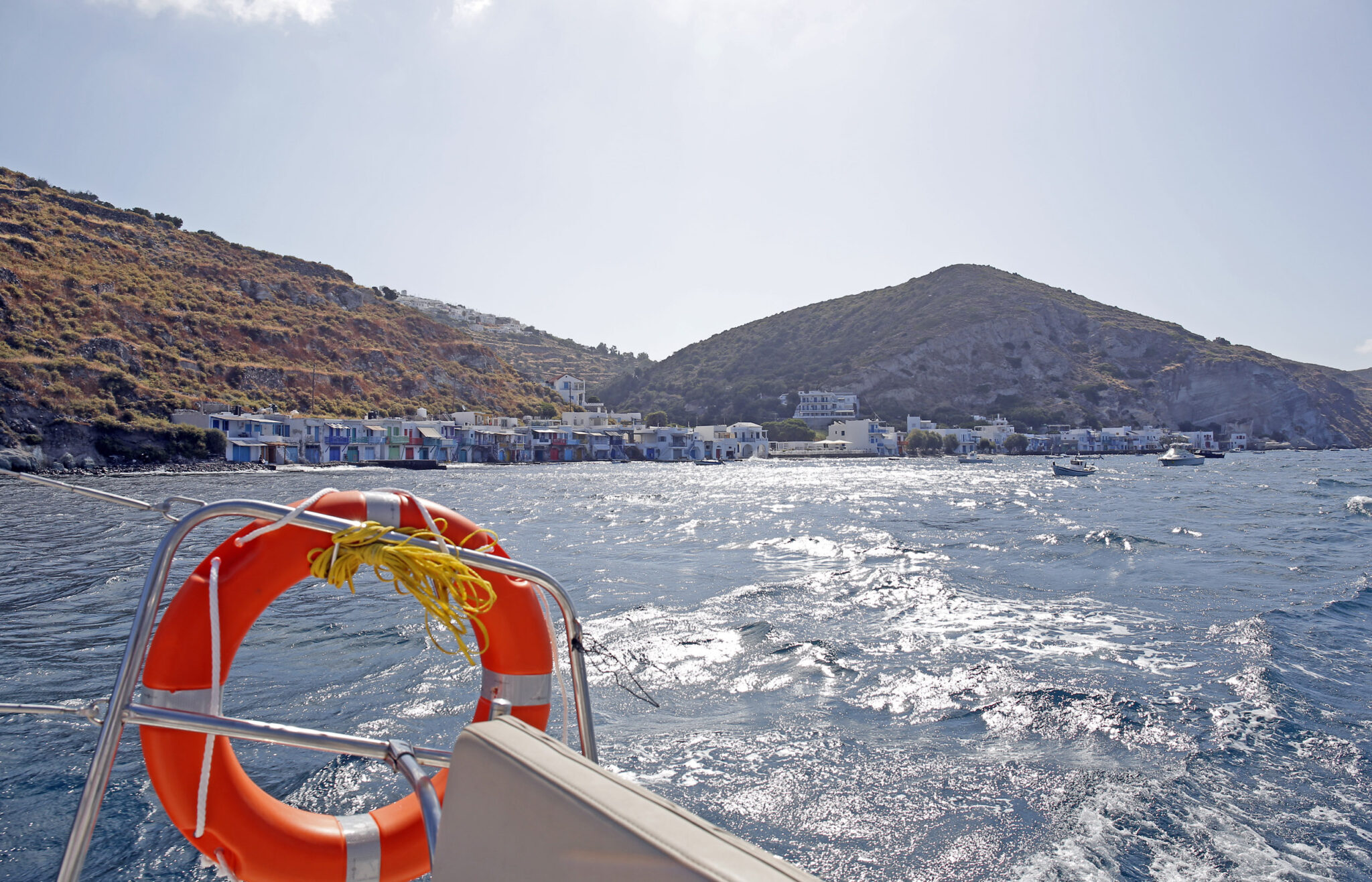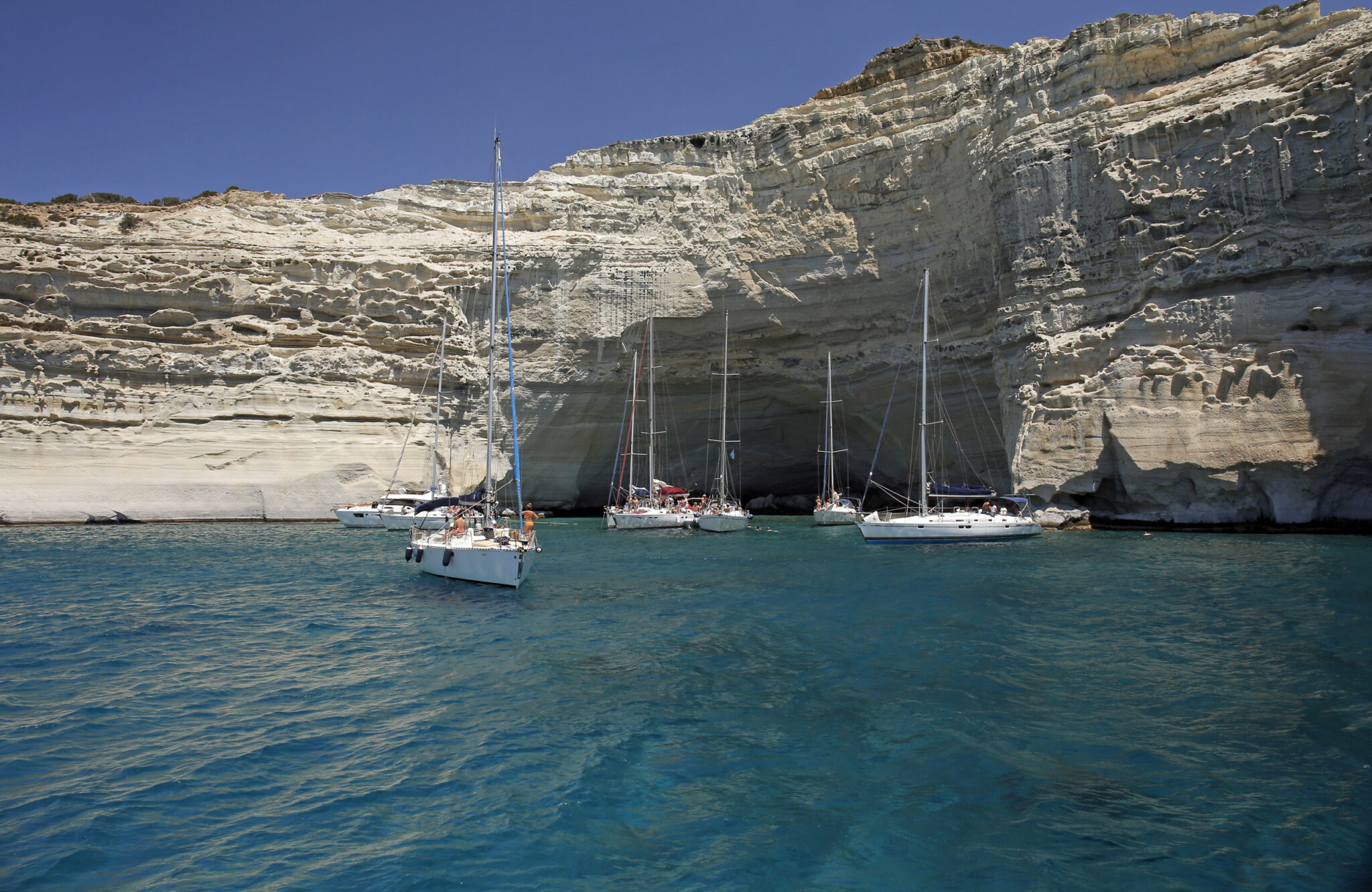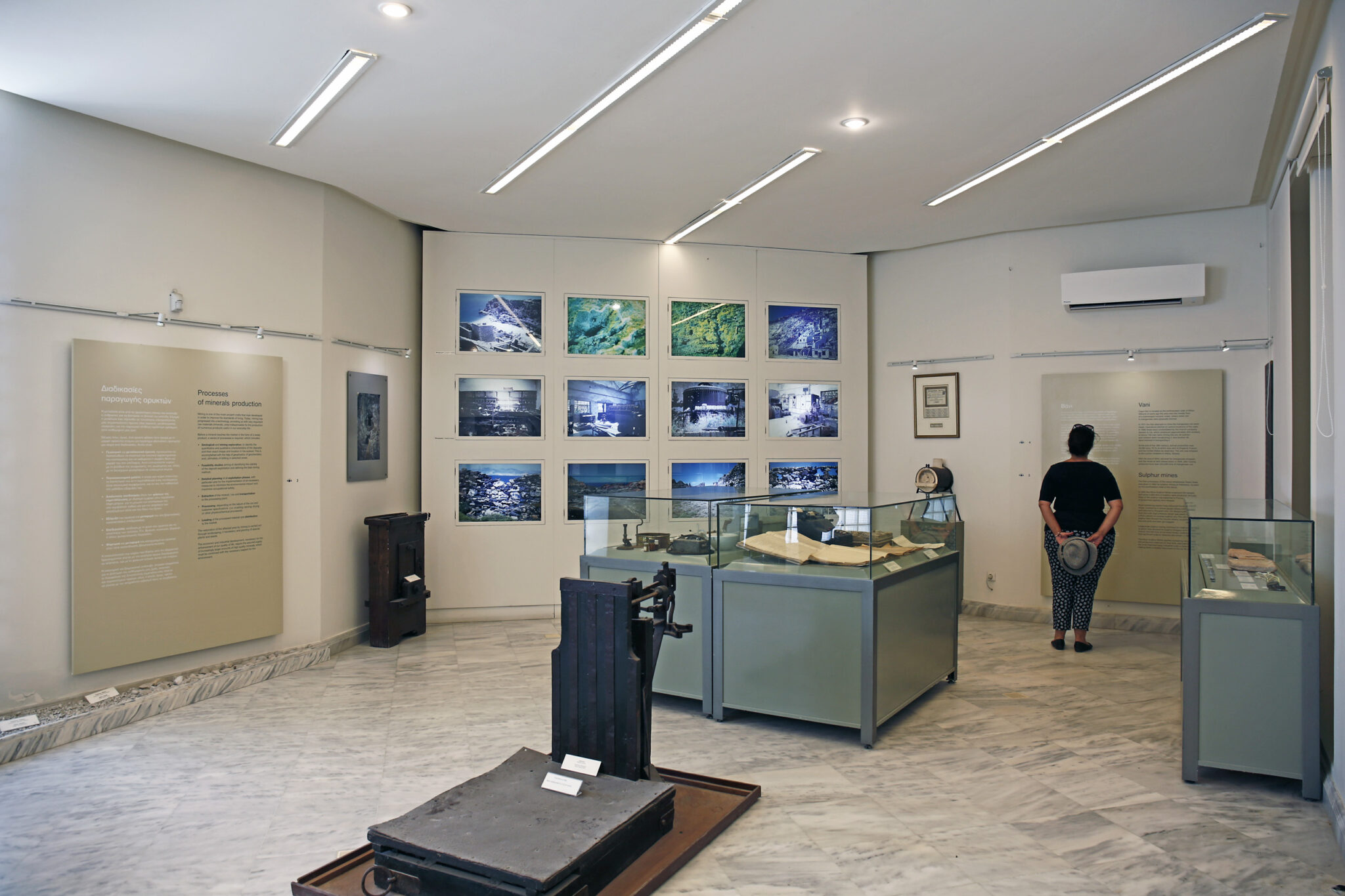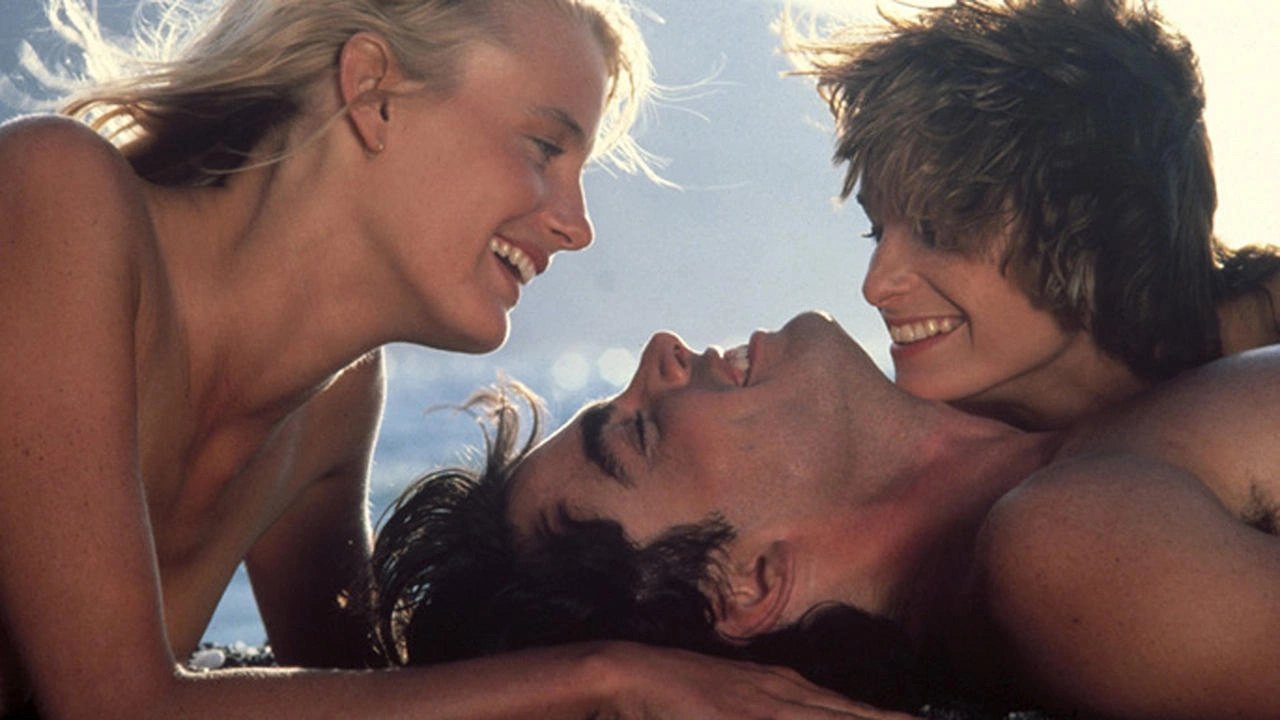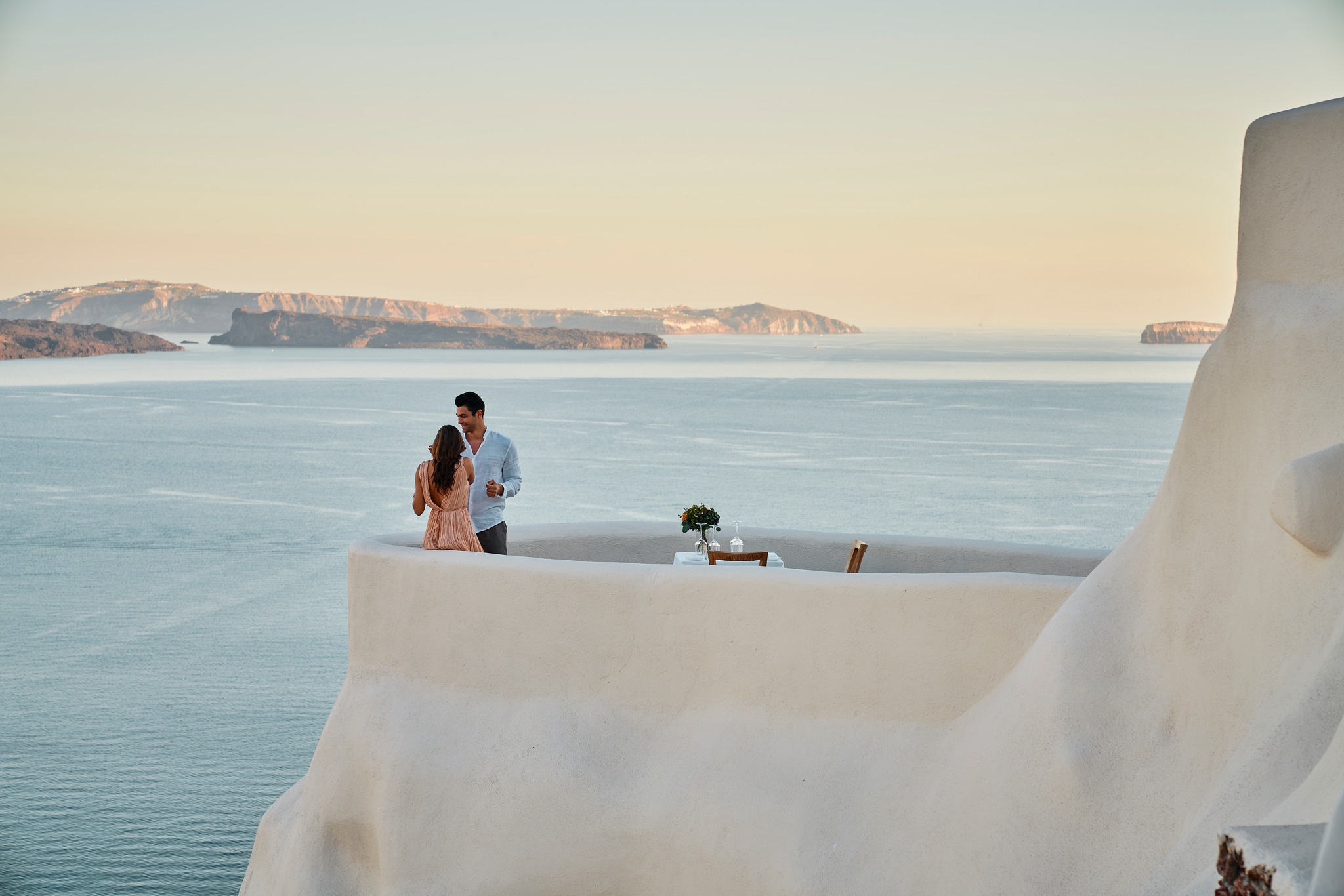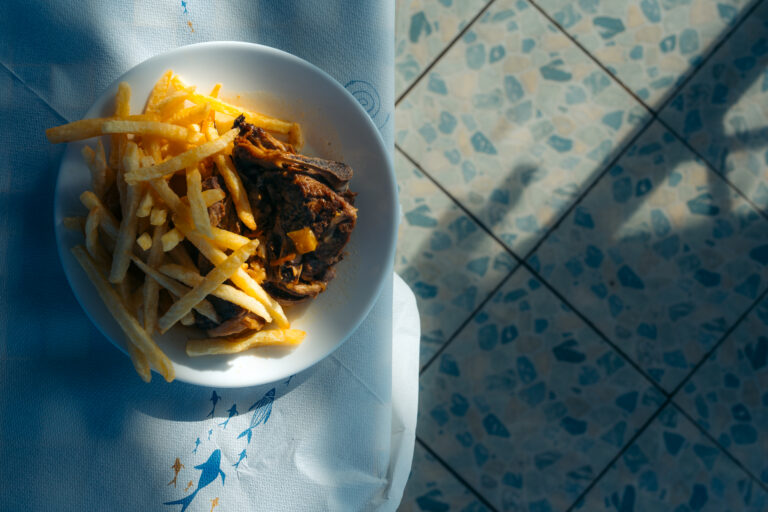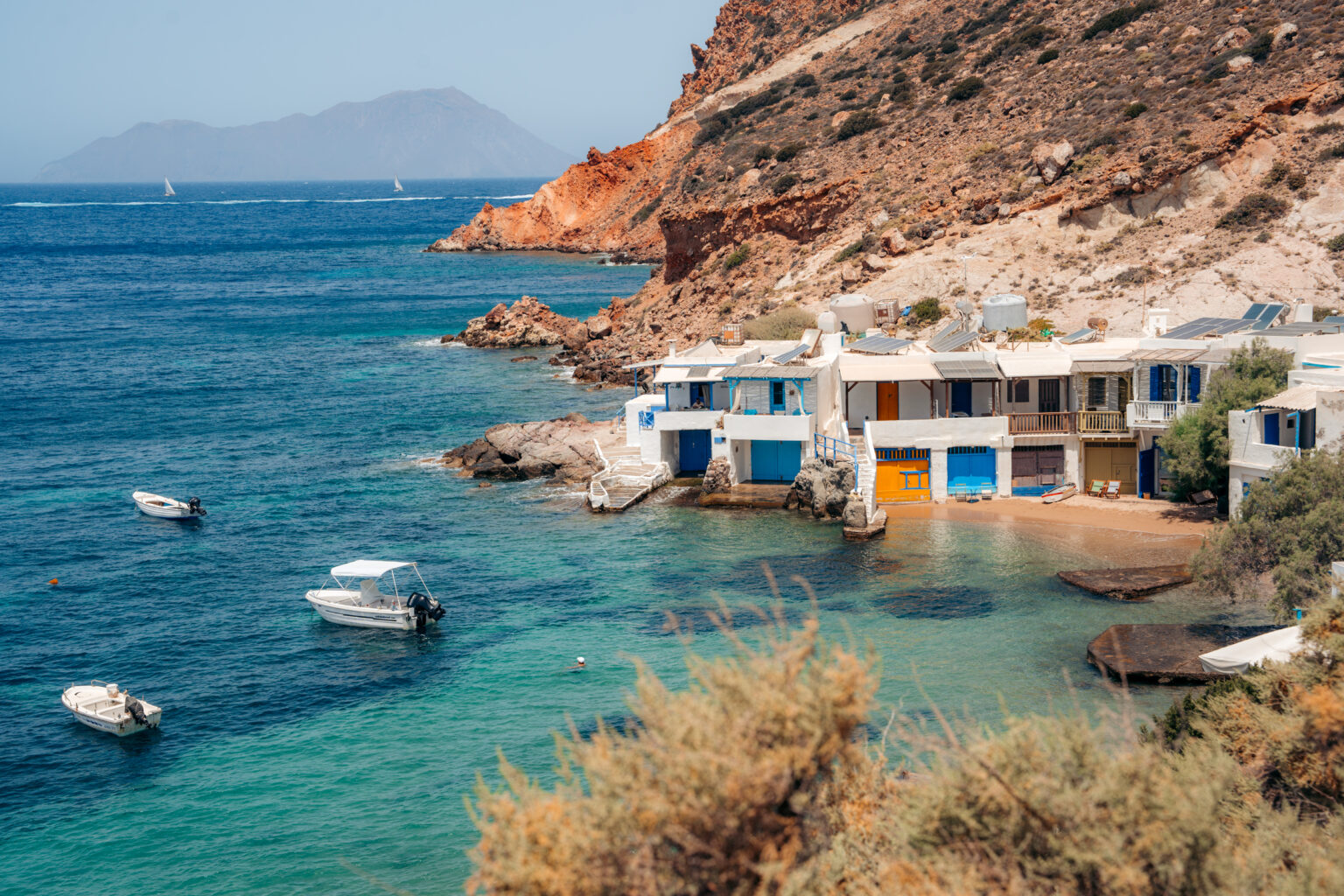Colourful, wild, sun kissed, lacy, caressed by the wind, geologically diverse, deeply Cycladic; Milos, no matter how many times you visit, remains charming and appealing.
Arrival
Milos is already a worthy sight, as the ship passes through the narrow passage between Kimolos and Pollonia, going parallel to the north-eastern side. The turquoise waters, the rock formations, the bright white surfaces of Sarakiniko, the foam from the waves crashing into the shore, the hill of Plaka, just before the ship turns to enter the port, one of the largest natural ports in Greece, the view of quaint Klima from the boat, and, finally, Adamantas, get you all excited.
Bright and clean, Adamantas, the island’s harbour, welcomes visitors. It reflects the modern Cycladic life, with the port, the marina, the cafés, the bars, the tourist offices, the shops all neatly lined. The settlement was created in 1831 by Cretan migrants, who moved to the island after a decree of the Kapodistrias government. Like every island port, it’s bustling with noise and activity, fast paced, with quite some traffic, being the island’s arrival and departure point.
The warm welcome at the hotel comes with a wide smile and small talk that creates a simple, friendly, familiarity. A feeling that stays with us throughout our stay in Milos. Our excitement to explore makes us unload our car fast and depart shortly for the island’s inland.
A ride
We follow the signs to Pollonia, at the northeast edge of Milos. The roads are good and well-signed, and the traffic, as we leave Adamantas, gets lighter. The uphill road, at every turn, reveals new vies of Milos’ bay and of Adamantas, and the blue of the horizon. A warm wind, trademark of the Cyclades, is blowing from the Aegean sea. New, elegant buildings, businesses, gas stations and super markets are the last signs of modern life in sight as we turn left towards Mandrakia, the almost theatrical, colourful fish village, just 5km from the port. The village’s vibes instantly change the mood, like taking a trip in time and seeing the traditional Cycladic way of life, with the scenic port and the “sirmata”, the two-storey colourful houses whose ground floor was used to protect the fishermen’s boats during the winter, that are Milos’ trademark.
The locals seems to have added the bold colours of the doors to paint the canvas of their daily life. We catch a whiff of charcoal-grilled mezze, and hear conversations coming from the sirmata. A line of octopi are hanging to dry in the sun with the emerald water in the foreground. It’s so beautiful it feels like it’s a set, designed to look picture-perfect.
We continue our exploration heading back to the main road, with one of the most famous beaches in the world as our destination. There are cars parked on the road at quite a distance from the entrance of the moonscaped beach of Sarakiniko. The reflection of the sun on the bright rocks is almost too much to look at. Dozens of visitors are walking around, taking pictures, admiring the landscape and posting about it on social media, and from a distance they resemble colourful geckos on the rocks. The sea is deep and deep blue, in perfect contrast with the rocks, while there are some basins on the rocks, where people bathe. The rocks in Sarakiniko are almost amphitheatrical, creating a feeling of everyone being part of one large – really large– group. The landscape is incredible no matter what, but if you visit early in the morning, for a nice, refreshing swim, to wake the body and soul and then head to another beach, you’ll be even more impressed.
On the way to the beautiful Pollonia, the route is scattered with access to beaches like Mitaka, Alogomantra, Pahena, including to the impressive Papafragas cave, right next to the main road. Many beaches on one island are always a plus, obviously.
After all those stops to the beaches, a bite to eat, or even a proper meal in Pollonia is the perfect reward, rounding off the day, making the trip seem longer, even if it’s just the first day.
Plaka – Tripiti – Triovasalos
One of the nicest drives; these three little villages, shining like pearls on the brown back of Adamantas, encapsulate the essence of Cycladic villages. Narrow alleys, staircases leading to backyards, churches, grocery stores, coffee shops, taverns, laundry drying in the sun, bus stops, colourful windows and doors, windmills, small olive groves, bougainvillea trees, the list goes on endlessly. In contrast with the port of Adamantas, here it’s mostly quiet, providing a nice, easy break and a welcome escape. And even though in Pera Triovasalos, in Triovasalos and in Tripiti there’s still a sense of normalcy and of a regular daily routine, Plaka, located at the highest point of the hill, reaching the top with its castle, can be described as a true marvel of the senses, completely distinct. Throughout the day, from early in the morning till late at night, this place is simply gorgeous and has something to offer to everyone; from the cafés and restaurants, the elegant shops, the amazing views from the courtyard of Panagia Korfiatissa church, to the lovely route to the top, there are countless opportunities to fully experience and appreciate this wonderful place.
On our way to the top, a young woman asked us to take her photo with the view. Speaking a mix of Greek and English, Georgina tells us about her links to Milos, her parents’ home, who, like many others, migrated to Australia many years ago, in their youth. It’s her first visit to the island after 25 years and she is overcome with emotion for this amazing, unique land that has a special place in her heart, even though she lives so far away.
Starting in Tripiti, we take the trail, among the olive trees, that leads to the spot where one of the most famous sculptures in the world, Venus de Milo was discovered. Left of the trail, in April 1820, farmer Georgios Kentrotas, discovered this marvel of the Hellenistic period. The French bought the sculpture and took it to the Louvre where it remains on display till this day. There’s a plaque at the spot where the sculpture was found. At the Archaeological Museum in Plaka, there’s an exact replica on display, that was given to the museum from the Louvre.
Near the location where Venus de Milo was found, you should visit the catacombs that have been dug out in the volcanic soil, to serve as an early-Christian cemetery in Milos. Looters and vandals have visited throughout the years, leaving their marks on the walls, however, there are some signs that still survive on some “arcosolia” (carved arches) that were not destroyed by the vandals. The feeling of being inside the catacombs, with the sparse lighting, is wonderfully otherworldly.
From the spot where Venus de Milo was found, you can enjoy the view of the ancient theatre that was built between the 3rd and 1st centuries BC. German archaeologists were in charge of the excavations in the area, starting in 1816. The restoration and preservation works of the theatre, that is estimated to have accommodated more than 700 people, continue to this day.
Going downhill, after this amazing historical and archaeological tour, we end in Klima, this picture-perfect fish village, famous around the world for its lovely, colourful “sirmata” right next to the water, in the west. The local fishermen would keep their boat and tools in the cave-like ground floor, in the winter, while they often lived upstairs. Today the sirmata are almost exclusively used as tourist rental lodgings, after being renovated.
At sea
Going on a daytrip around the island of Milos on a catamaran, is a fun adventure that includes multiple stops for swimming, dining on board, and chatting with people literally from every corner of the world, is an unforgettable experience. The weather was a bit rough on the day we took the tour, something we found very exciting, as it made the trip a real adventure. We left from the port of Adamantas early in the morning, with young captain Giorgos Ntalis on “Chrysovalandou”, a modern catamaran owned by www.milosadventures.gr. For some of the passengers the waves and wind wasn’t ideal, but after a while we all got used to it. As we “danced with the sea”, the smell of sauteed onion coming from the small kitchen tinkled our noses. The cook, Ilias Kamakaris kept steady while he chopped potatoes and meat in the middle of storm, calm, and as we were to find out, very good at his job.
One stop after the other to Kalogria, the amazing Kleftiko, Tsigrada, Firligkas; a constant variation of shades of turquoise, of sea water spray and of various mines on land (you can learn more about the rich mining history of Milos at the Milos Mining Museum www.milosminingmuseum.com).
And, of course, swimming, lots of swimming, in protected corners and natural pools, clear and inviting. The passengers and crew decided to diagonally cross the sea to reach Poliego. Totally accustomed to the boat’s sway on the waves, we reflected on the beauty of this island, on the more developed east side, the near pristine west side –with rare flora and fauna habitats–, the exponential tourist development that might be dangerous, the stories we heard, and we concluded, once more, that Greece is one of the most beautiful places on Earth. We ended the excursion with a dive off the catamaran in one of the most stunning waters ever, in Poliego.
Read also:



